All about sea buckthorn buckthorn
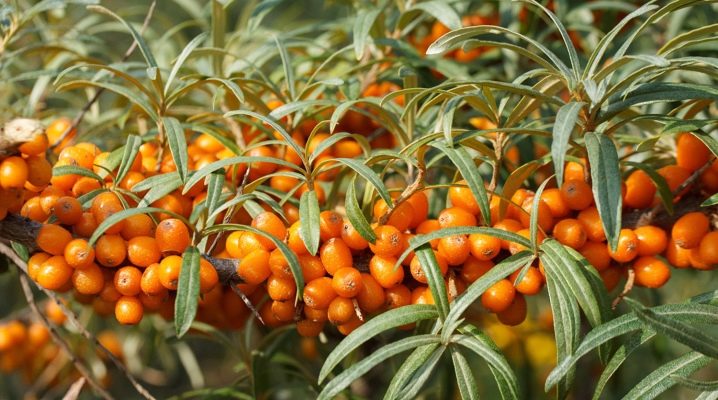
Forming beautiful landscapes using a variety of plants is not an easy undertaking and many factors must be taken into account. As ornamental shrubs, sea buckthorn is often used, which looks interesting and looks good in combination with other plants, has useful fruits. To get a beautiful bush or tree that yields a harvest, you must be able to choose the right place for planting, carry out the correct planting and care process.
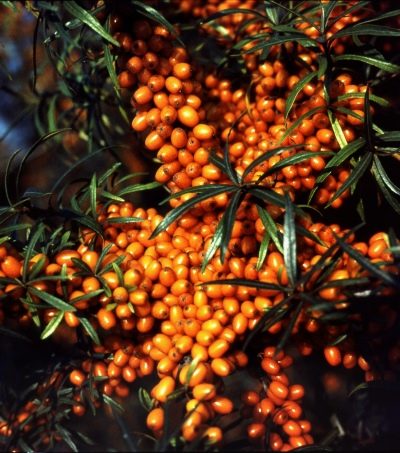
Description
Buckthorn is a shrub that looks like an olive tree. It can grow from 1 to 2 meters like a bush or reach 5-10 meters if it grows like a tree. The crown of sea buckthorn is heterogeneous, it consists of long and short branches. Young ones have a gray tint, old ones are covered with dark bark, they all have sharp thorns. The leaves are gray-green on top and brown or yellowish on the bottom.

The main feature of sea buckthorn and its value are berries that ripen in autumn. These fruits are very much appreciated. Due to the abundance of vitamins and minerals, sea buckthorn is used in medicine, and the oil obtained from its fruits has the greatest value.
The name of the culture has two Greek words: hippos - horse, and phaos - shine. The transition to Latin slightly transformed these words, which gave the form hippophaes. The Russian version came from the abundance of fruits on the branches that stick around the bush.

The buckthorn or buckthorn buckthorn is an ornamental plant that bears fruit, in addition there are varieties that do not bear fruit.
Sea buckthorn "Hikul", for example, is an ornamental shrub with a height of 0.5 to 2 meters. The plant is used to decorate flower beds, green landscape areas, landscaping parks, and decorate the coastal zone. This variety has a gray-brown smooth bark, leaves are long, spherical. The bushes bloom from mid-spring to summer, the size of the flowers is small, they are almost invisible behind the foliage.
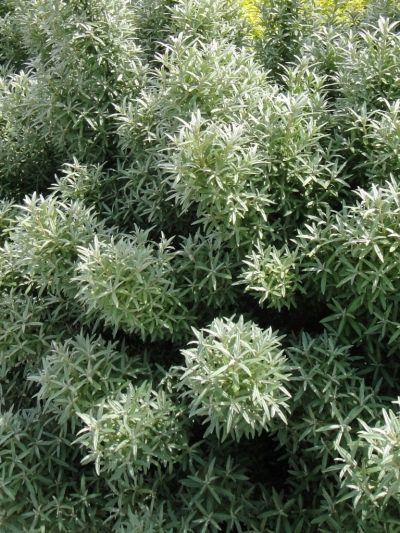
Sea buckthorn is a deciduous crop that grows in different regions. The life expectancy of shrubs and trees is 5-15 years, depending on habitat conditions and proper care.
Sea buckthorn belongs to dioecious plants; female and male flowers bloom in it. Fruits are formed from females, males serve as pollinators of females.

Spreading
In the wild, sea buckthorn grows throughout Europe, there is a lot of it in the Caucasus, in the western and middle regions of Asia, Mongolia, and it is also in China. In the tropical regions of Pakistan and India, the distribution ranges of this plant can also be found. On the territory of Russia, large concentrations can be found in the European part of the country; there are separate foci of wild distribution in the North Caucasus, in the east and north of Siberia, and in Altai. Sea buckthorn grows most actively near water bodies, where there is a sufficient amount of light and moisture.
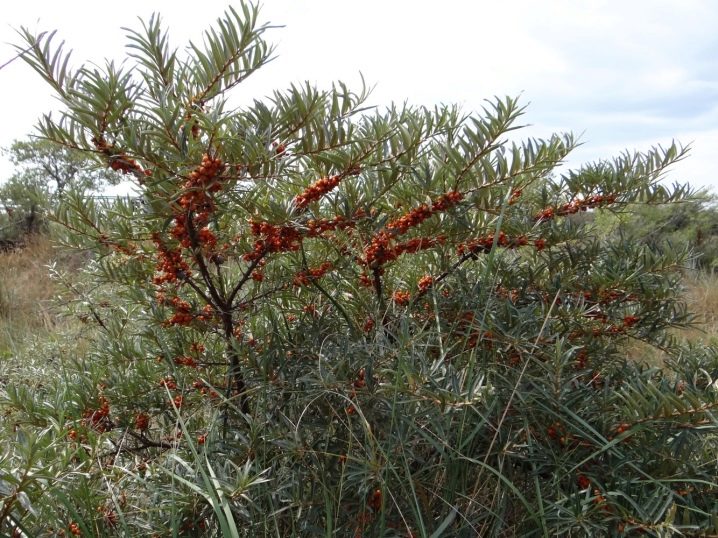
In recent years, sea buckthorn has been grown in Russia to obtain valuable and useful fruits. Good conditions for the cultivation of this shrub turned out to be in Siberia, where more and more territories are planted with this plant every year. Breeders are developing new varieties in order to increase yields and make the crop as resistant to all negative factors as possible.
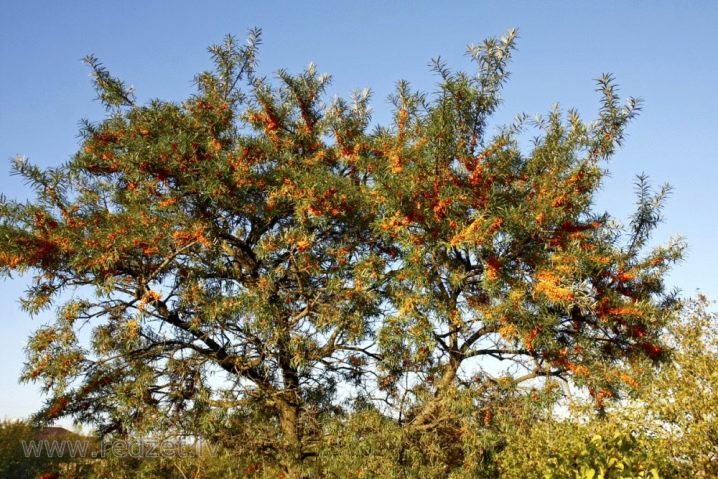
Landing
Depending on the purpose of the shrub, the features of planting sea buckthorn may undergo certain changes. Important features are the choice of the location of the future shrub and the timing of planting. In order for the bush to please with an attractive appearance, it is necessary to plant it in spring or autumn, having properly prepared the ground and creating all the conditions for its germination in a new place.
In case of violations of the technology of planting a crop, damage to the plant can be caused, it will poorly resist diseases and pests, which will affect its attractiveness and productivity.
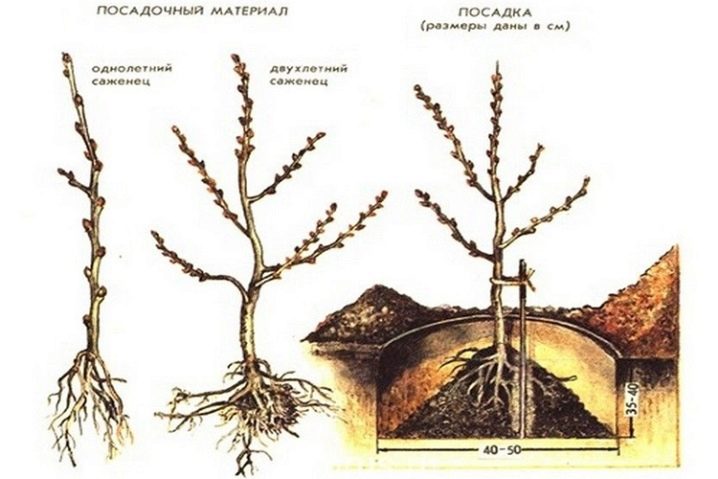
Seat selection
To get beautiful, well-growing shrubs and harvest them, you need to find a good place to plant new shrubs. The main criteria in this case will be the following conditions.
- The presence of the sun. Plants that grow in the sun develop fully, do not get sick and bear fruit well. Bushes that are partially or completely shaded grow slowly, barely bear fruit and may die over time.
- The soil for planting should be light, preferably sandy. In clay areas, the culture does not develop well, does not have the desired appearance and fertility.
- The presence of a sufficient amount of moisture. With good watering and ensuring the desired moisture level for the sea buckthorn, the bushes grow quickly, have an attractive appearance, bloom violently and give a bountiful harvest. If it is not possible to provide constant watering, it is better to plant the plant near water.
- Free place. For a shrub to develop normally, it needs free space. The branches of the sea buckthorn are quite spreading and numerous; in the absence of free space, the development of culture slows down. It is best to plant seedlings in desert areas, where there will be no tall vegetation within a radius of 3-5 meters.
- Lack of neighbors. To enable sea buckthorn to actively grow and develop, it is necessary to plant it where there are no fruit trees or bushes nearby, which have a negative effect on the shrub. Sea buckthorn grows best on the outskirts of the site.
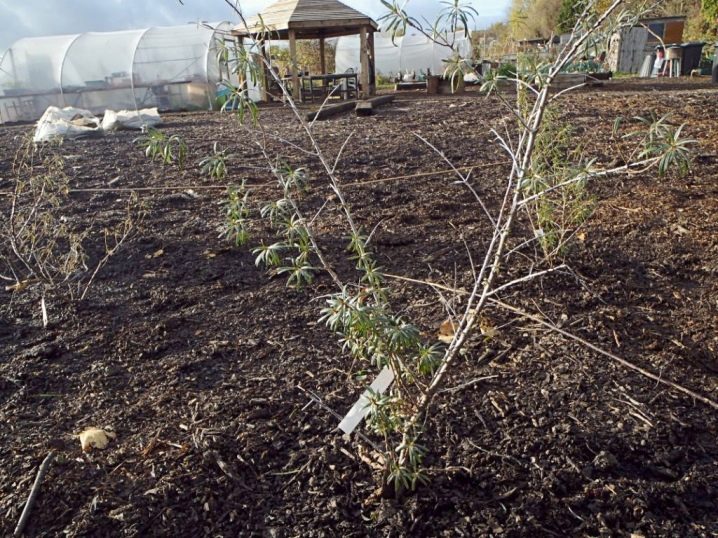
As soon as the site for sea buckthorn is selected, you can engage in the next stage - preparing the soil so that the bush quickly settles in a new place and actively grows.
Preparation of soil and seedlings
To ensure the normal development of the sea buckthorn bushes, it is very important to prepare the soil in advance. If the bush is planted in the spring, then in the fall the site is dug up, and useful components are introduced into the soil. It is important to analyze the condition of the soil and determine what exactly it is missing. Fertilizers are necessarily applied to poor soil to improve the composition of the soil, which leads to an increase in fertility. With increased acidity of the soil, it is necessary to pour wood ash, and if the earth consists mostly of clay, then it must be diluted with sand, making 2 buckets for each square meter.
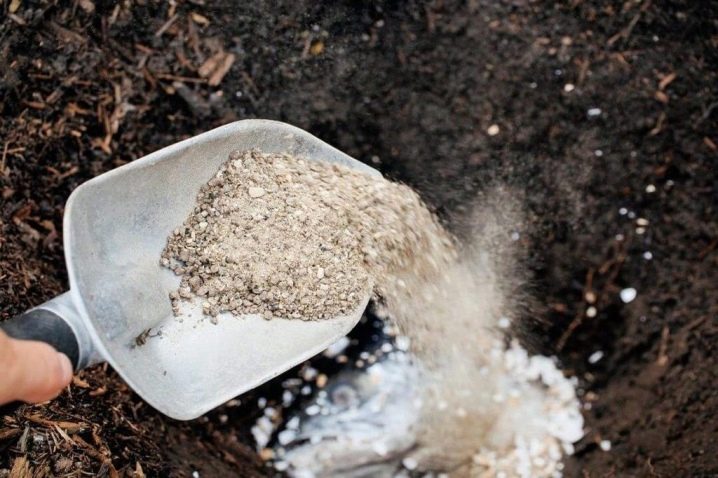
For any garden bed, the introduction of organic fertilizers will be useful: manure, compost, humus, enough for a bucket per 1 m2. A pre-prepared bed goes through winter frosts and a spring thaw, after which it is dug up again. When everything is ready to go, you can start planting seedlings.
The success of growing sea buckthorn depends not only on the soil: good seedlings play an equally important role. It is best to use one-year-old seedlings that have the following symptoms:
- size about 40 cm;
- from 2 to 4 roots, the length of which is 10-20 cm;
- smooth trunk with developed lateral shoots;
- smooth bark without cracks and delamination.
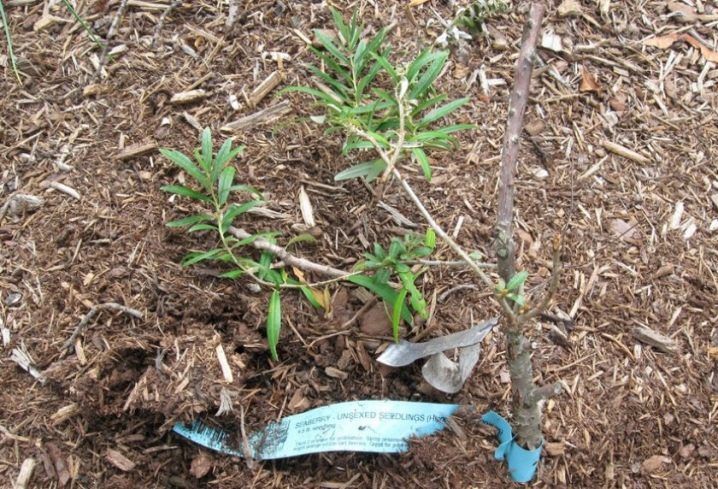
To get not only a decorative, but also a fruiting section of sea buckthorn, it is necessary to purchase one male for every 3-4 female bushes.
Before planting, it is recommended to put the seedlings in water or Kornevin solution, which will promote faster root growth and habituation in a new place.
Scheme
To achieve the desired results in planting sea buckthorn, it is necessary to adhere to a certain work scheme.
- Preparing the seedling pit. The optimal dimensions of the pit are 80x80 cm.The distance that should be between the bushes cannot be less than 1.5 meters, but it is better to give the bushes a distance of 2 meters.
- Backfilling the pit with useful components. Compost or a special mixture is poured to the bottom, which will saturate the soil with useful substances. These fertilizers are mixed with black soil, after which superphosphate is added.
- It is necessary to make a mound of the prepared soil mixture, on which to place the seedling and distribute the roots of the plant evenly. The seedling must be positioned so that the root collar is deepened by 5 cm into the ground, since adventitious roots can come from it.
- Carefully cover the roots with fertile soil, from time to time tamp the soil with your handsso that no voids remain in it. After the end of the work, it is necessary to compact the soil again so that it settles as much as possible.
- Water the seedling with several buckets of water. So that the soil does not dry out, it is necessary to lay out straw, grass or peat near the trunk.
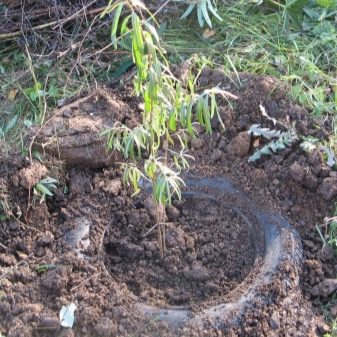
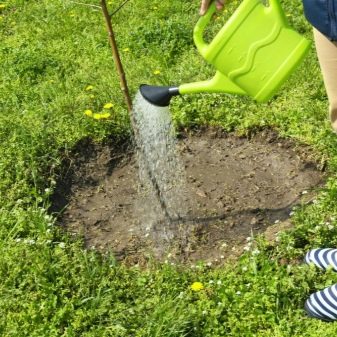
Observing the correct sequence of actions and other recommendations, you can count on the fact that the seedling will be accepted, will quickly grow and will soon please with a pleasant appearance and abundant fruiting.

Care
Sea buckthorn is an unpretentious crop, no specific measures are required for its cultivation, however, without any care, the bush will look undeveloped, ugly, and will have a weak harvest. To care for this plant, watering, pruning and proper preparation for wintering are needed.
Watering
A young seedling needs watering in the first year after planting. The bushes are watered with water as the earth begins to dry out. If fertilizers were applied to the soil during planting, then nothing else can be added for the first couple of years. The near-trunk zone must be cleared of weeds so that it does not take moisture from the crop. So that the soil does not dry out very quickly, it is worth spreading dry grass near the bushes.
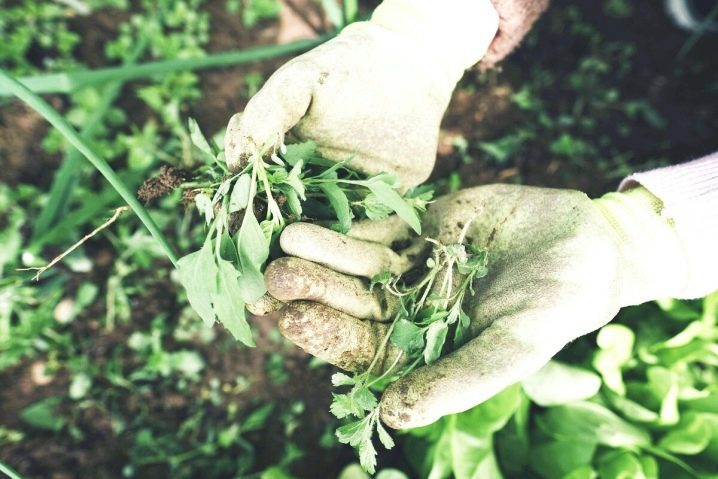
Adult shrubs are rarely watered, only if the summer is hot and dry, and the culture grows on its own. If the bushes began to develop not so actively, then it is necessary to add fertilizers. It is best to add a spoonful of potassium and 2 tablespoons of superphosphate per 10 liters of water and water adult plants with this solution.
You can use "Uniflor-micro", pouring 2 tsp. into a bucket and pouring such a composition under the bush.

Pruning
Pruning is an important part of sea buckthorn care. In the spring, it is necessary to remove all dry, broken and unnecessary branches, in the summer those processes from which the growth has not begun are removed, in addition, you need to monitor the processes from the roots. They also need to be cut.
After 5 years of growth of the bush, it needs to be rejuvenated, for which in the fall old branches are cut off, which bear fruit poorly. One branch is removed in one year. Pruning is also carried out at the stage of plant formation. If a bush is created from it, then 6-8 shoots are left, of which, as a result, 3-4 of the most powerful and fertile ones remain. It takes more time and effort to create a beautiful tree, here it is important to form the crown correctly and leave the necessary branches.
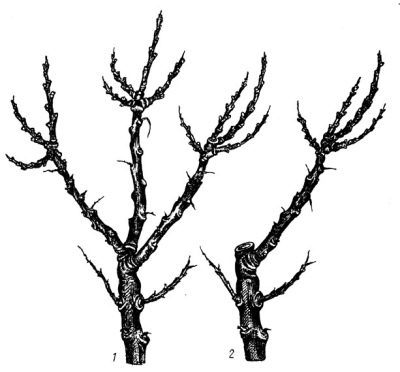
It is better to form bushes from the female varieties of sea buckthorn, and from the male varieties - trees. Correct and timely care, as well as high-quality pruning, allow you to grow beautiful and fruiting plants.
Preparing for winter
Sea buckthorn bushes can withstand low temperatures, therefore they do not require special measures in preparation for the winter season. If the autumn turned out to be dry, then it is recommended to water the bushes well before the cold snap, giving them a supply of moisture. To protect the roots from frost, the soil above them must be mulched.
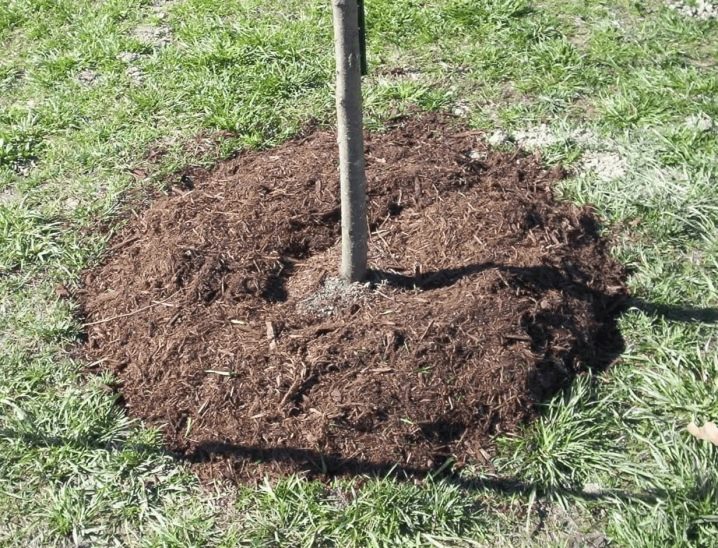
Diseases and pests
Sea buckthorn is a useful and beautiful plant that does not cause big problems in care, but from time to time situations may arise related to the presence of diseases and pests on the plant. The most typical diseases of culture are the following ailments.
- Endomycosis - a fungus that affects the entire bush. The main feature is shriveled berries. To fight you need to use Bordeaux liquid and an antibiotic. Processing is carried out in spring and autumn. Diseased berries are removed.
- Scab - plant damage that develops on foliage, bark and berries. If you do not get rid of the problem, the plant will dry out. To fight, it is necessary to remove all infected branches and burn them, and treat the bush with a 3% solution of "Nitrofen".
- Fusarium wilting - damage to leaves, shoots and berries. If you do not fight the disease, the foliage will dry out and fall off. In order to prevent infection, it is necessary to thin out bushes in a timely manner, remove problem branches and burn infected ones.
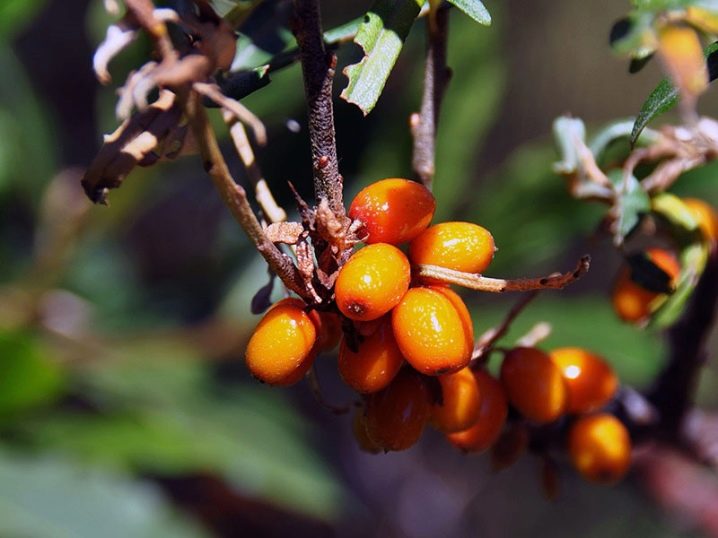
In addition to diseases, there are also pests that can prevent sea buckthorn from growing and developing normally. The most common are the following parasites.
- Aphids appear on the leaves, after which they curl and eventually dry up and fall off. To get rid of the problem, you need to spray the plants with Fitoverm or make a solution based on ammonia.
- Spider mites provoke damage to buds and buds, the appearance of cobwebs throughout the plant. For the fight are used "Fitoverm", insecticides "Aktara", "Healthy Garden" and others.
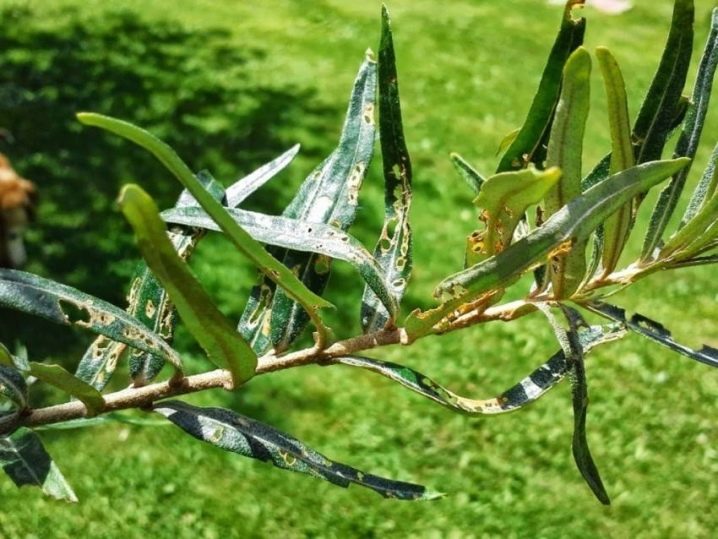
By treating bushes from diseases and pests correctly and in a timely manner, you can preserve their health, attractive appearance and active fruiting.
Collection and storage
You can use both leaves and sea buckthorn berries. The leaves are plucked in May, when they contain the most useful substances, and the fruits must be picked off in September-October, when they have a yellow-orange color and an elastic consistency. Harvesting is possible only in dry weather, it is important to sort out the fruits and leaves, removing everything bad and spoiled.
The fruits can be dried and then stored in a dry place. You can cook it like jam, make a compote out of them, or grind it with sugar. Fresh fruits are stored in wooden barrels, frozen berries must be placed in a bag. Fresh fruits can be stored in a dry, dark place for 3 days, frozen - six months.












The comment was sent successfully.